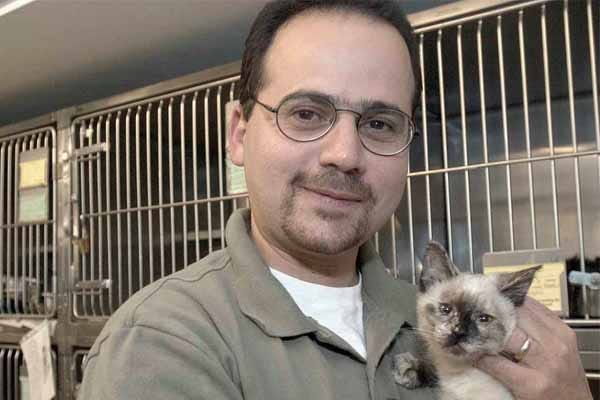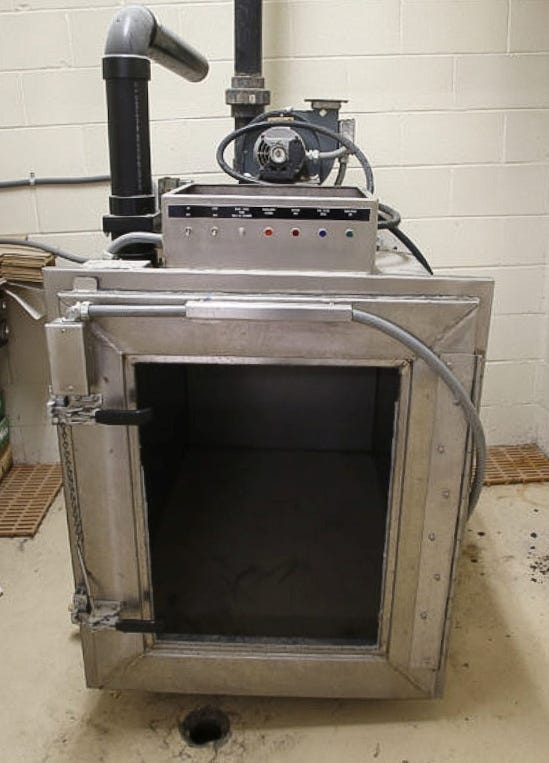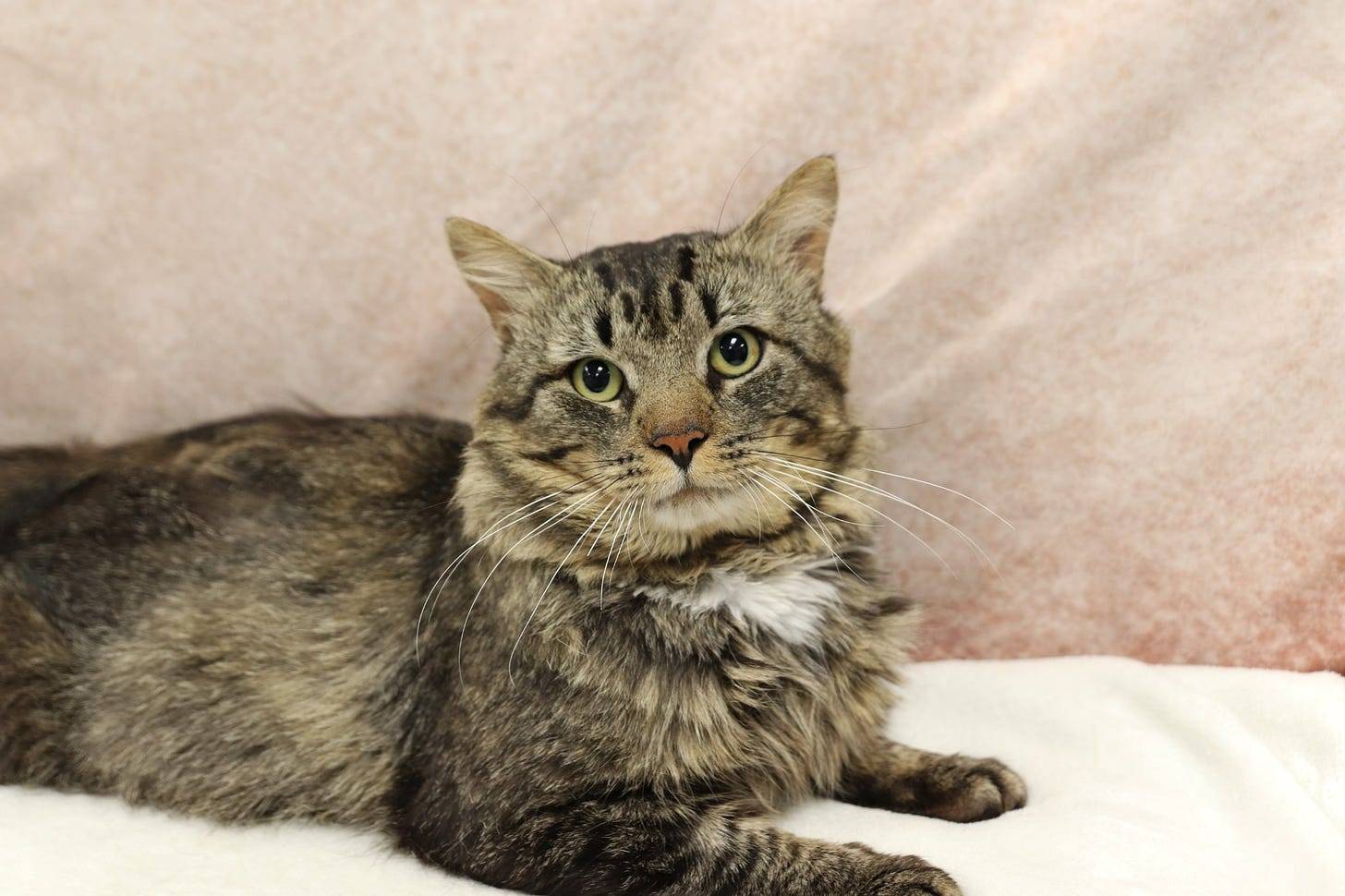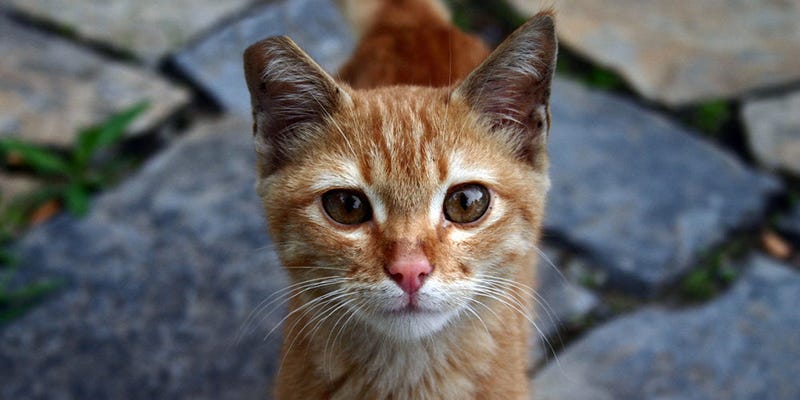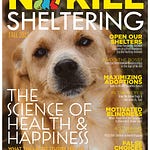
These are some of the stories making headlines in animal protection:
Subscribers can also listen to the podcast above, which includes extended commentary on many of the issues, including a new report that says killing in U.S. shelters increased in 2021 for the first time in a decade and how policies regarding “non-native” species harm children.
Today marks the 21st anniversary of when No Kill went from the theoretical to the real. On June 10, 2001, no No Kill communities existed in the U.S. On June 11, there was one. As I drove into the parking lot for the first time as the new director of the SPCA in Tompkins County, NY, an agency that ran the municipal shelter for all ten towns and cities of the county, I was met at the front door by a truck driver with five kittens he didn’t want.
Spaying his cat was not a priority. To him, the kittens were no longer “his problem.” Whether they lived or died was not his business. In his estimation, by handing them over to us, he had done his duty. He had brought them to the Tompkins County SPCA, the animal control authority for the entire county, and they were now our responsibility.
For many shelters, this is where the breakdown that leads to killing occurs: it was his failure to spay his cat and make a lifetime commitment to the kittens. But this view, while endemic to animal control, is inaccurate.
First, it is for this reason that shelters exist in the first place: to serve as a safety net of care for a community’s neediest companion animals. Second, the practices of the shelter itself often lead to killing. If a shelter does not maintain adequate adoption hours or has poor customer service, refuses to work with volunteers, foster parents, or rescue groups, fails to treat and rehabilitate sick, injured, or traumatized animals, or exterminates, rather than sterilizes, community cats, then the killing is not an inevitable outcome of circumstances beyond the shelter’s control. It results from the choices made by those working at the shelter itself.
Thankfully, on June 11 of that year, the truck driver did not live in a community whose shelter still made excuses. On that day, Tompkins County explicitly rejected the policies legitimized and championed by pounds nationwide. Not surprisingly, we found all of the kittens a home.
On the wall above my desk is a single clock, set to the time in Ithaca, New York — ground zero in the fight for a No Kill nation. On June 10, no U.S. shelter had a lifesaving guarantee for dogs, cats, rabbits, mice, gerbils, hamsters, and — given that we were an urban/rural shelter — also chickens, pigs, horses, and cows. On June 11, Tompkins County became the first. It didn’t matter if they were young or old, blind or deaf, social with people or “feral,” healthy, sick, injured, or traumatized; they were guaranteed homes and all found one.
And it didn’t take ten years to do it. It didn’t take five years to do it. Despite a per capita intake rate twice the national average and per capita taxpayer funding that was a fraction of what others spent (roughly 90 cents per person), we did it overnight. No excuses. No compromises. No killing.
It started with a truck driver and a box of kittens in a pothole-filled parking lot in Ithaca, New York. The rest, as they say, is history.
To mark the occasion, the e-version of Redemption, my book which tells the story, is available for FREE download on Amazon this weekend. (The film based on his also free to watch online.)
The Ohio Senate voted unanimously to ban the gas chamber. “This bill basically makes sure that history doesn't repeat itself” since no shelters currently use them.
The end of gassing in Ohio came after the Ohio Court of Appeal ruled its use illegal because “the carbon monoxide method of euthanasia as the standard method of destruction of dogs does not immediately and painlessly render the dog initially unconscious and subsequently dead and is not humane.”
Webster’s dictionary defines euthanasia as “the act or practice of killing or permitting the death of hopelessly sick or injured individuals in a relatively painless way for reasons of mercy.” Unfortunately, in many animal shelters across the nation, animals are not being killed because they are hopelessly sick or injured, but rather out of convenience. And for some of them, their lives are not taken in a “relatively painless” manner but in one of the most prolonged and excruciating ways: the gas chamber.
When the chamber fills with poisonous carbon monoxide (or carbon dioxide) gas, the animals inside gasp for breath, feel a searing pain in their lungs and often claw at the chamber door or throw themselves against the sides in a desperate attempt to escape. Fights between animals within a chamber are not uncommon. They urinate and defecate on themselves and each other. They suffer convulsions. And they lose consciousness and brain function only after their vital organs shut down, which can take as long as 30 minutes, causing intense and prolonged suffering before death.
But not in Ohio, not anymore. And to ensure that it never happens again, the bill to legislatively ban it now heads to the House for consideration.
For those who live in a county or state that still gasses animals, The No Kill Advocacy Center has model legislation to ban it, a step-by-step guide to getting it passed, and NKAC attorneys stand ready to help.
As more people turn to rescue and adoption and more shelters embrace progressive policies, the number of communities placing over 95% and as high as 99% of the animals is increasing:
Midland County, MI, reported a 98% placement rate for dogs and 98% for cats.
Pflugerville, TX, reported a 97% placement rate for dogs and 93% for cats.
These communities and national data prove that animals are not dying in pounds because there are too many, too few homes, or people don’t want the animals. They are dying because people in those pounds are killing them. Replace those people, implement the No Kill Equation, and we can be a No Kill nation today.
New York is poised to become the latest state to ban the retail sale of commercially bred dogs, cats, and rabbits in pet stores. Legislation to do so has been presented to the Governor for her signature.
If the Governor signs it, New York will join California, Maryland, Illinois, and about 400 cities nationwide that also ban the practice, requiring pet store owners who want animals to partner with rescue groups and shelters.
The bans serve three purposes:
Encouraging people to adopt/rescue;
Educating the community about dog, cat, and rabbit abuse in mills; and,
Stopping that abuse.
And they work. “Nebraska Department of Agriculture records show that half of the state’s commercial dog and cat breeders have left the business” because of retail pet store sales bans.
Pet stores generally get their animals from Commercial Breeding Enterprises (CBEs), commonly known as ‘puppy mills.’ And CBEs engage in systematic neglect and abuse of animals, leaving severe emotional and physical scars on the victims. One in four former breeding dogs have significant health problems, are more likely to suffer from aggression, and many are psychologically and emotionally shut down, compulsively staring at nothing.
New York is not alone. “The sale of [commercially-bred] dogs, cats and rabbits is now illegal in Martin County,” FL pet stores, after “County commissioners voted unanimously... to prohibit the retail sale of the animals,” there too.
Sixteen U.S. senators are asking the Biden Administration to support the animals, and the will of California residents, in defending Proposition 12 before the U.S. Supreme Court. The Trump Administration previously sided with industry.
Overwhelmingly passed by voters, Prop 12 prohibits the sale of pigs, baby cows, and eggs when the animals were subjected to “extreme methods of farm animal confinement.” Companies that profit from abusing and killing pigs for food sued and lost at the District and Court of Appeal levels, but the nation’s High Court agreed to hear the case. If the Supreme Court reverses the lower courts by adopting the industry’s expansive reading of the Commerce Clause, any state law that impacts companies in other states could become illegal. According to the senators,
Expanding the Commerce Clause as the National Pork Producers Council (NPPC) seeks to do in this case would have ramifications far beyond the pork, egg, and veal industries. Proposition 12 only regulates in-state sales of egg, pork, and veal products and does not regulate out-of-state producers, but the NPPC’s argument claims a state law is unconstitutional any time it could indirectly cause businesses to adjust out-of-state operations. If adopted, this ruling could allow large, multi-state corporations to evade numerous state laws that focus on harms to their constituents, including those addressing wildlife trafficking…
It might also impact state laws that ban the retail sale of commercially-bred dogs, cats, and rabbits in pet stores, as well as other efforts to protect animals.
Stay tuned.
New Zealand is on a quest to exterminate every animal it deems “non-native,” including community cats. “In addition to it being morally repugnant,” writes a biologist, “it is not based on science and it won’t work.”




